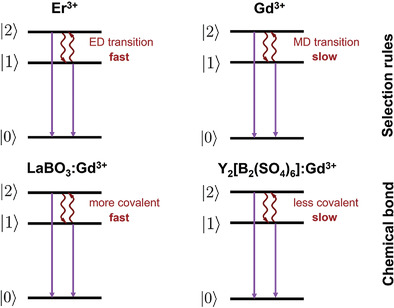Together with the groups of Prof. Dr. Andries Meijerink (Universiteit Utrecht, The Netherlands) and Prof. Dr. Henning Höppe (University of Augsburg) we have investigated the temperature-dependent luminescence of Gd3+ somewhat closer. Despite the shielded nature of the 4f orbitals, they do react to subtle changes in the local ligand field – and this should be also reflected in the non-radiative transition rates between two excited 4f levels. Indeed, we observe that with an increasing covalency of the Gd-O bonds from an yttrium borosulfate (Y2[B2(SO4)6]:Gd3+) to conventional lanthanum orthoborate (LaBO3:Gd3+) the non-radiative coupling rates between the excited levels of Gd3+ in the UV range become slightly enhanced. This offers first experimental evidence for what we have already predicted earlier and that non-radiative transition rates do react to ligand field effects. This could lead to a new access to the understanding of non-radiative transitions in general and has an important impact on the performance of luminescent thermometers. The work has been recently published in Advanced Optical Materials and is available open access:
P. Netzsch, M. Hämmer, E. Turgunbajew, T. P. van Swieten, A. Meijerink, H. A. Höppe, M. Suta, Beyond the energy gap law: the influence of selection rules and host compound effects on non-radiative transition rates in Boltzmann thermometers.
Adv. Opt. Mater. 2022, 10, 2200059


